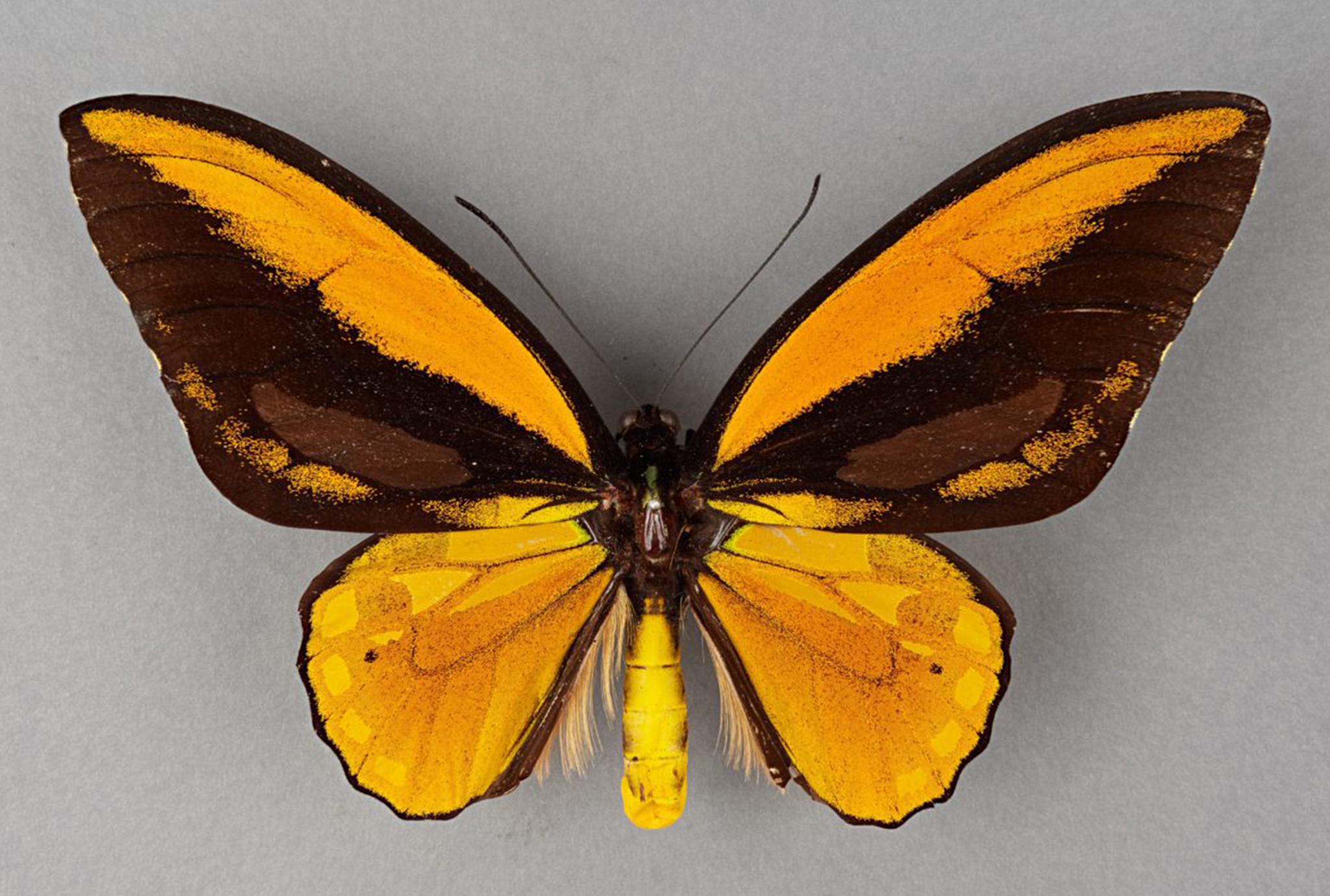Our Treasure of the Month: Wallace’s Golden Birdwing
 A male specimen of about 10 centimetres from the collection at the Museum of Nature Hamburg. © LIB, Nguyen
A male specimen of about 10 centimetres from the collection at the Museum of Nature Hamburg. © LIB, Nguyen
Alongside Charles Darwin, Alfred Russel Wallace was one of the great pioneers of natural history. On his travels, he discovered countless animals that had never been described before – including our Treasure of the Month, Wallace’s Golden Birdwing. This month, we will take a closer look at the specimen in our collection and commemorate its namesake on his 200th birthday celebration.
During his career as a researcher, Alfred Russel Wallace named around 120 different species of butterflies, and many more species of animals and plants were named after him. He found them, for example, on his travels to Brazil (1848) or to the Malay Archipelago from 1854 to 1862. To this day, his work influences collection practices in natural history museums around the world – including the Museum of Nature Hamburg.
This year marks the 110th anniversary of Wallace’s death. During his lifetime, he observed and collected birds, butterflies, and beetles, which were then completely unique in their forms and colors and unknown to the world. His start as a naturalist was anything but smooth: on his return from Brazil, his ship “Helen” burned down in 1852 – taking with it thousands of collected insects, hundreds of birds along with all the notes and drawings he had made on his journey. It was also a financial disaster for Wallace, but it did not deter him from his research path.
Instead, seven years later, he found our treasure on the island of Bacan in Indonesia: Wallace’s Golden Birdwing (Ornithoptera croesus Wallace, 1865). Full of excitement, he described how he discovered it: ” You may perhaps imagine my excitement when, after seeing it only two or three times in three months, I at length took a male Ornithoptera. When I took it out of my net, and opened its gorgeous wings, I was nearer fainting with delight and excitement than I have ever been in my life; my heart beat violently, and the blood rushed to my head, leaving a headache for the rest of the day. The insect surpassed my expectations, being, though allied to Priamus, perfectly new, distinct, and of a most gorgeous and unique colour; it is a fiery golden orange, changing, when viewed obliquely, to opaline-yellow and green. It is, I think, the finest of the Ornithoptera, and consequently the finest butterfly in the world?” He believed it to be the most beautiful butterfly of the Ornithoptera genus and therefore the most beautiful butterfly in the world.
In our collection at the Museum of Nature Hamburg, there are a total of 19 specimens, including males and females, of the world’s most beautiful butterfly, collected like Wallace did on the Halmahera and Bacan islands in Indonesia. Many of the specimens are from the collections of Hermann Rodinger (dated as 1952) and Fuchs (1956).


